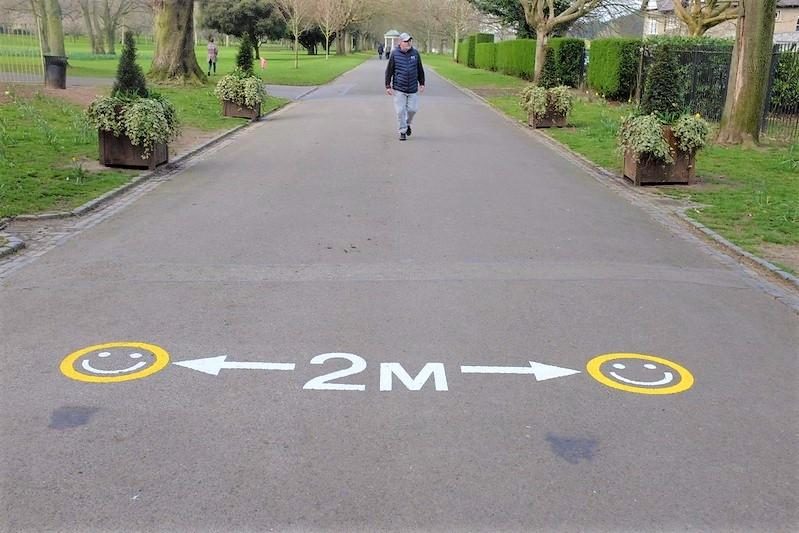The World Health Organisation declared at first that the Covid-19 death rate was 3.4%. Modelling at Imperial College London — based on early, unreliable data — suggested more than 500,000 people could die in the UK unless drastic action were taken.
Since then academics have been working hard to understand more about Covid-19 and we have seen remarkable progress. Here are some of the key findings.
First, it's clear that Covid-19 is much more common than first assumed. The vast majority of people infected have mild symptoms or no symptoms. Researchers have tested for antibodies in general populations and reached the same conclusion: the number of people infected with Covid-19 is many times higher than counted by official statistics.
Almost a month ago studies found that infection rates were already 11% in Robbio, northern Italy, and 14% in Gangelt, western Germany. More recently, in New York, antibody testing suggested that up to 25% of the population had been infected by late April, compared with the official tally of 1.7%.
Second, the evidence clearly shows that Covid-19 is far less lethal than first feared. Once you correct for the large number of undetected cases, it has a fatality rate comparable to that of a severe flu season, at least in areas where hospitals and nursing homes have not been overwhelmed.
We also see that Covid-19 lethality has a steep age gradient, with about 90%-95% of deaths in Europe occurring among those over 65. For children and young people we know that Covid-19 is less lethal than flu.
Third, we understand when and how Covid-19 can become devastating in a local population. Lethal Covid-19 is often a "nosocomial" infection: people catch it in hospital. The virus can also be devastating for nursing home residents: in several European countries about half of reported deaths are from nursing facilities.
This helps to explain why certain areas — Bergamo in Italy, Queens in New York — have disproportionate fatalities. These are places with high rates of infected medical personnel, who pass the virus on to already sick patients. Infected healthcare workers can — unwittingly — create hospital chains of infection with tragic consequences for vulnerable people.
Similarly, nursing homes are full of the elderly and incapacitated — and government policy in the UK (and New York) was at first to put infected people in these facilities to reduce the pressure on hospital beds, with fatal consequences.
The knowledge now accumulated has significant implications for policy-makers. Perhaps most importantly, our leaders should continue to stick to their science-based approach and not be afraid of communicating the latest findings to the public.
Given that the risk of dying from Covid-19 is low, politicians can assure the public that our worst fears are over.
Another consequence is that a lockdown is no longer a proportionate response, particularly given its profound negative impact: massive unemployment and increases in domestic violence, mental health problems and child abuse, as well as deaths caused by delayed or cancelled medical treatment.
If policy-makers are basing decisions on the latest evidence, ending the lockdown should also not mean launching an era of mass surveillance — whether through testing, contact-tracing or unreliable antibody testing for "immunity certificates".
Contact-tracing makes sense when there are small numbers of cases. But it is probable that several million people have been infected in the UK, which makes it practically impossible to test on the scale required.
Neither should carefully removing lockdown measures be seen as an attempt to reach herd immunity — an inadvisable strategy for an infection that so easily infests hospitals and nursing homes.
A better approach is to utilise testing in a precise way to guide reopening. Hospitals and nursing home staff must be tested regularly to protect the most vulnerable — along with stringent infection control and far stricter hygiene measures in these facilities.
The public should be urged to stay away from hospitals if they have Covid-19 symptoms — unless they are extremely sick — and frail people may need to be quarantined at home for longer. Further easing of the lockdown can be shaped by careful evaluation of how the epidemic develops and the hospital bed capacity.
From the beginning of this global crisis our leaders have taken action based on the best available data. At first this information was sparse and alarming, and draconian measures were understandable. To be sure, Covid-19 is a novel virus, and there is a lot we have yet to learn. But the latest evidence and data all points in a favourable direction.
To put it another way: the new news is good news. Given everything we know about this virus, policy-makers can shift to the next phase and start to bring the lockdown to an end.
About the authors
John Ioannidis is professor of medicine, epidemiology and statistics at Stanford. Rohan Silva was senior policy adviser to No 10 and is a senior visiting fellow at the London School of Economics




R.C.
(Sorry for posting this obvious thought first.)
RC